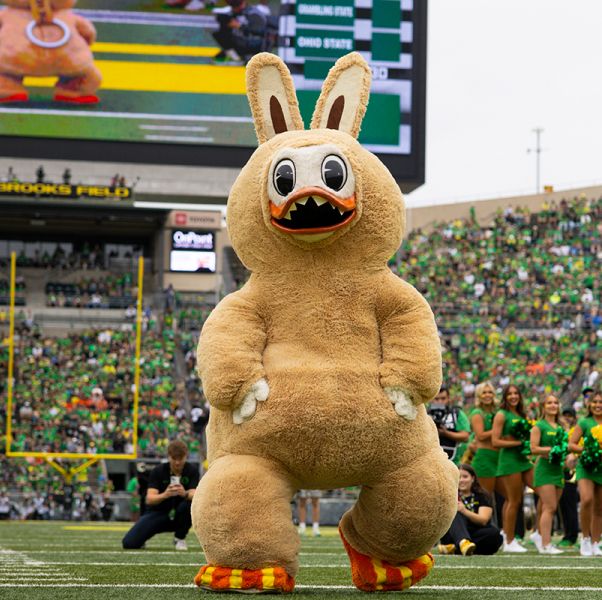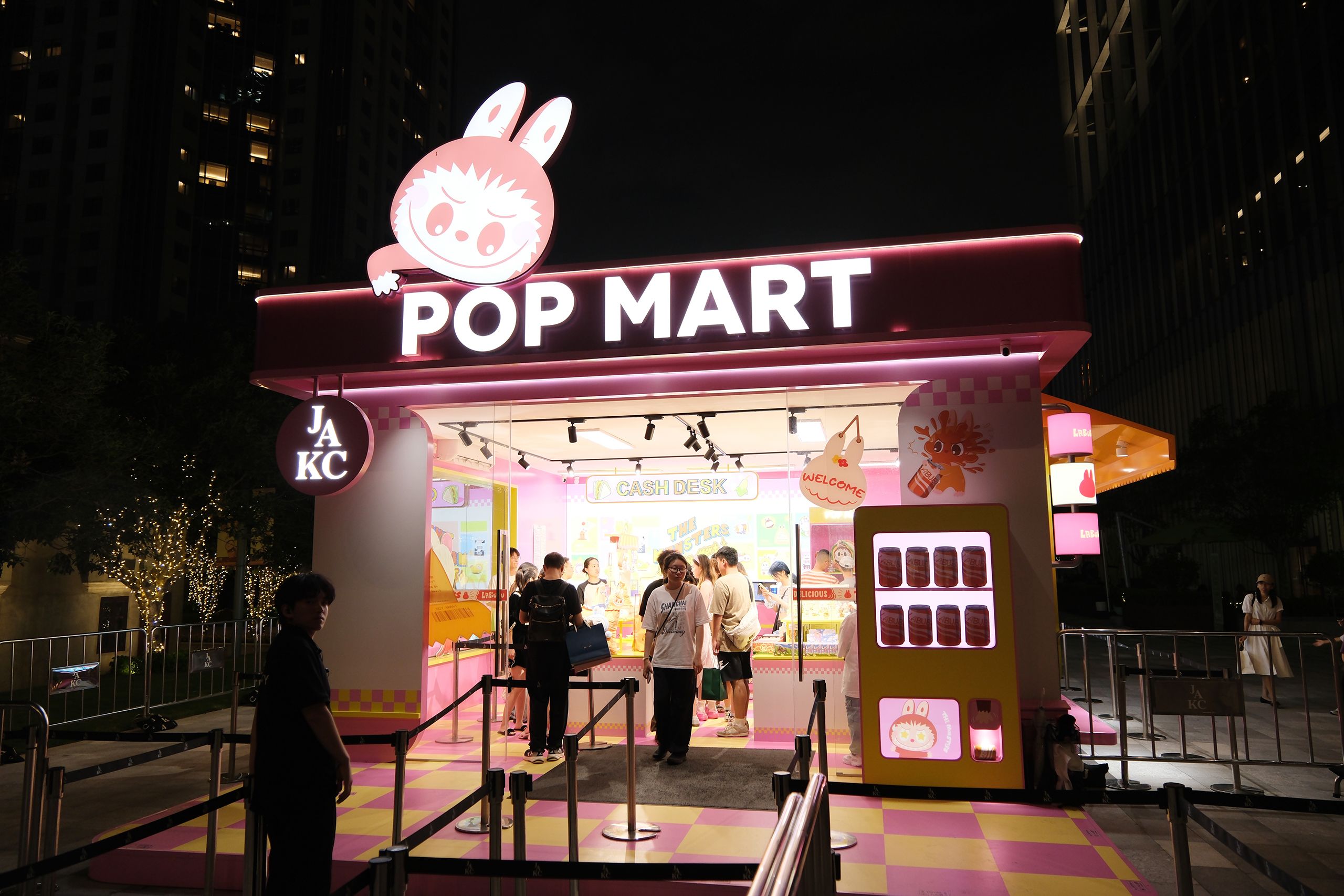It's a bag charm. It's a stuffed animal. It's a little monster.
It's … Labubu!
These ugly-cute plush toys are suddenly everywhere. The Duck even made a cameo dressed as one at a recent football game.
Alisa Freedman, a professor of Asian studies at the University of Oregon who specializes in pop culture, said the trendy toys are just one in a long line of character-based products that have spread from their country of origin to become a global phenomenon.
She spoke to OregonNews about Labubus, why people are drawn to them, and what they say about the current moment.
What even is a Labubu, and why are they so popular?
Labubus are cute, fuzzy, grotesque monsters with evil grins. They're often seen in the form of bag charms attached to purses and totes, but they started as a children's book character in a series by Hong Kong-born author Kasing Lung.
Although the first book in the series was published in 2015, the explosion of the toy phenomenon has been much more recent.
"They really shot (up) in popularity in part due to a boost given by the super popular K-pop band Blackpink and their singer Lisa," Freedman said.
Internet and social media have been big factors in the toy's rise.
"I think Labubu represents a very different Gen Z or Gen Alpha, even, way of consuming media," she said. "For example, they might learn about trends by following celebrity influencers and watching short, attention-grabbing videos."
But celebrity boost is just one part of the cachet. Another factor is the limited marketing.
Labubus are only sold through one retailer, Pop Mart. And they're sold in blind boxes, where the purchaser doesn't know what the creature inside will look like. Fans love the thrill of the hunt - and the chance to possibly get a limited-edition Labubu.
"It's the joy of surprise, of not knowing," Freedman said
That marketing strategy isn't unique to Labubus, though. Freedman compared it to a trend in Japan called gachapon, a gumball-like machine that dispenses poems or collectable trinkets for a small amount of money.
"Some people really love that element of surprise. I don't think it's new," Freedman said. "Even in the U.S., going back to the early 20th century, we have cereal boxes or Cracker Jack, where you don't know which prize you're going to get."

What's unique about Labubus compared to other recent trendy toys?
While some popular toys have taken off due to fans' strong connection to a book, movie or TV show, Labubus as a collectable toy have grown far beyond their source material and even become separated from it.
Freedman compares the phenomenon to the globalization of Sesame Street, the popular American kids' TV show.
"The program tried to market in Japan but failed on TV for a few reasons," she said. "In the American program the characters spoke too fast, or in the Japanese-localized program people thought the characters had annoying voices that couldn't compete."
But then, Elmo and all the other characters became unmoored from Sesame Street and became characters on their own.
"So now people in Japan know Elmo but don't know Sesame Street as a program," Freedman said.
Similarly, Labubus have taken on a life of their own, one with a much bigger reach than the books that sparked them. (The books are relatively hard to find in the United States.)
What about Labubus resonates with people?
"I don't think the phenomenon of cute toys with big eyes is new," Freedman said.
She points to characters like Hello Kitty, which has been around since the 1970s and remains an enduring force. And as evidenced by the popularity of troll dolls, people also love "uglycute" toys.
On a recent international trip, Freedman chatted up people in the airport who carried Labubus and asked them what the appeal was.
"Most people just said they're cute; it makes them feel good when they have a Labubu," she said. "They feel like they're part of a bigger trend, like when they see other people carrying it. Or they feel special when they have a limited-edition Labubu that other people don't have."
Personalization is a bigger trend, she said.
"You might notice this with our students walking around campus, that there's been a fad for bag charms to decorate your bags or personal belongings with cute plushies," Freedman said. "I think it's also the popularity for these kinds of really small, cute, little personal touches. And Labubu lends itself perfectly to that."

What can we learn about culture more broadly from Labubus?
Freedman is well-positioned to answer that question: She teaches a class at the UO called Japanese Pop Culture and the World, which explores how trends start in one place and spread around the globe.
"I love that it attracts students from different majors: marketing, psychology, art history and Asian studies," she said. "Students use the ideas that we discuss and the critical thinking tools that we cultivate in different ways in their careers."
For example, marketers can learn a lot from the rise of Labubus. It's an example of how the way people use product characters in their daily lives "really creates a desirable commodity," Freedman said.
"It has to be at the right price point for it to be that thing that feels like a little treat but isn't inaccessible," she said. "There are some collectors that spend tons of money, but spending a few dollars here or there on something that makes you happy seems to be a general trend."
"We could also learn a lot about social desires and fears, like why, in economically precarious times, are people spending money on something that seems not to be a necessity?" she said.
A big reason, she proposes, is a fairly simple one: Pop culture is made to comfort us.
"There's been a fad in times of trauma for soft materials," Freedman said. "When you have a Labubu on your bag, you might feel good. You feel like you're participating in a larger trend. It looks cute. You look at it, and you feel comforted."






